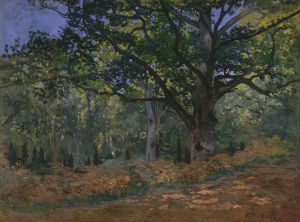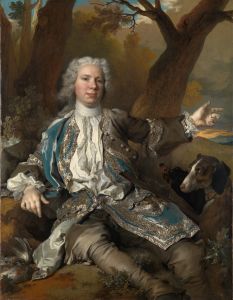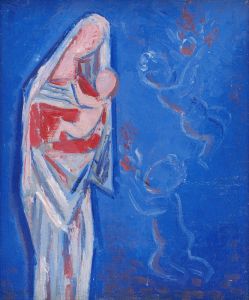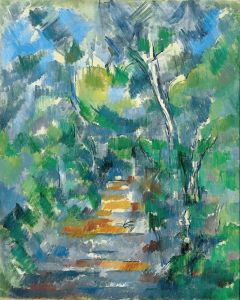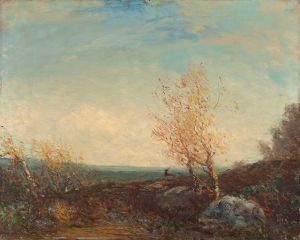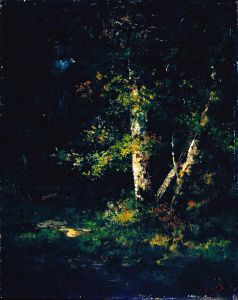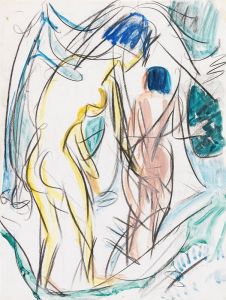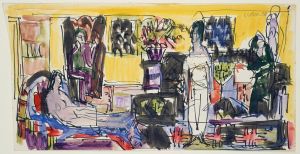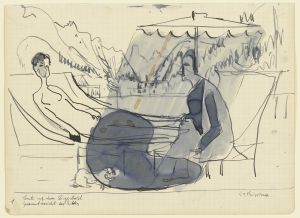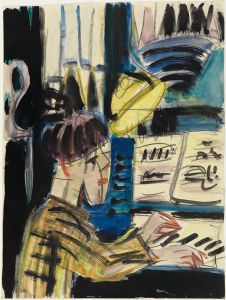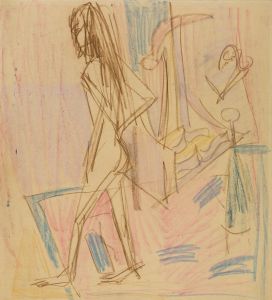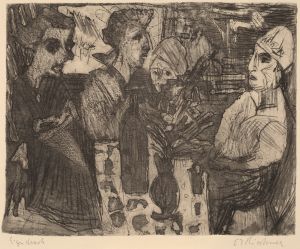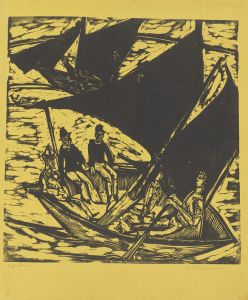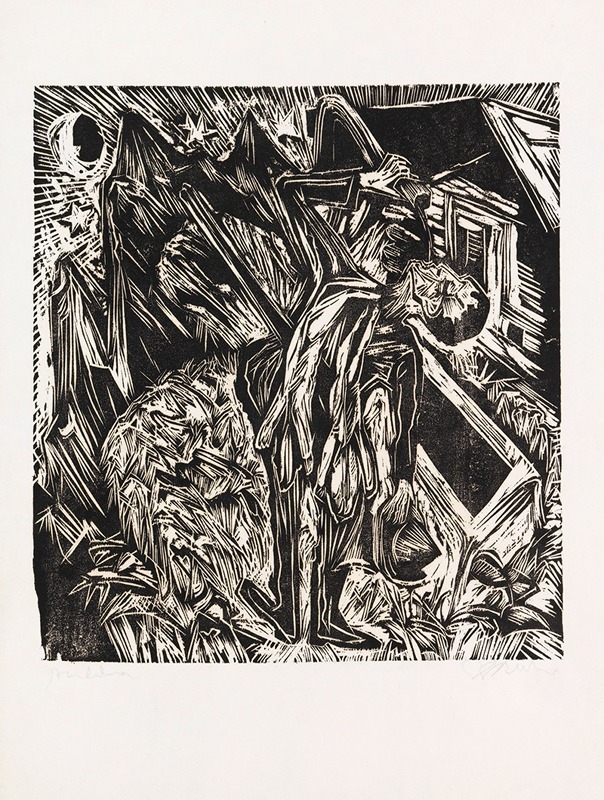
Trinkender Jäger
A hand-painted replica of Ernst Ludwig Kirchner’s masterpiece Trinkender Jäger, meticulously crafted by professional artists to capture the true essence of the original. Each piece is created with museum-quality canvas and rare mineral pigments, carefully painted by experienced artists with delicate brushstrokes and rich, layered colors to perfectly recreate the texture of the original artwork. Unlike machine-printed reproductions, this hand-painted version brings the painting to life, infused with the artist’s emotions and skill in every stroke. Whether for personal collection or home decoration, it instantly elevates the artistic atmosphere of any space.
Ernst Ludwig Kirchner, a prominent German expressionist painter and a founding member of the artist group Die Brücke, created the painting "Trinkender Jäger" (translated as "Drinking Hunter"). Kirchner's work is celebrated for its bold use of color, dynamic compositions, and the exploration of modern life and its complexities. "Trinkender Jäger" is one of his notable works that exemplifies his unique style and thematic interests.
Kirchner was born in 1880 in Aschaffenburg, Germany, and studied architecture in Dresden before fully committing to painting. His involvement with Die Brücke, founded in 1905, was instrumental in the development of German Expressionism. This movement sought to break away from traditional artistic conventions and express emotional experiences rather than physical reality. Kirchner and his contemporaries were influenced by various sources, including African and Oceanic art, which they saw as more authentic and untainted by Western academic traditions.
"Trinkender Jäger" was painted during a period when Kirchner was deeply engaged with themes of primitivism and the natural world. The painting depicts a hunter in a moment of rest, drinking, possibly from a flask or a stream. This subject matter reflects Kirchner's interest in the human figure and its relationship with nature, a recurring theme in his work. The hunter, a traditional figure often associated with masculinity and survival, is portrayed in a manner that emphasizes both his connection to and detachment from the natural environment.
Kirchner's style is characterized by its vibrant colors and expressive brushwork, both of which are evident in "Trinkender Jäger." The use of color in this painting is not merely representational but serves to convey the emotional tone of the scene. The brushstrokes are dynamic and fluid, contributing to the sense of movement and life within the composition. This approach is typical of Kirchner's work, where the physical act of painting becomes an extension of the artist's emotional and psychological state.
Throughout his career, Kirchner's work was marked by a tension between the modern and the primitive, the urban and the rural. "Trinkender Jäger" can be seen as an exploration of these dichotomies, capturing a moment of solitude and introspection amidst the broader context of human interaction with nature. This painting, like many of Kirchner's works, reflects his desire to capture the essence of human experience in a rapidly changing world.
Kirchner's life was profoundly affected by the events of the early 20th century, including World War I and the rise of the Nazi regime, which labeled his work as "degenerate art." Despite these challenges, his influence on modern art is undeniable, and his works continue to be studied and appreciated for their innovative approach and emotional depth.
"Trinkender Jäger" remains an important piece within Kirchner's oeuvre, illustrating his mastery of form and color, as well as his ability to convey complex themes through seemingly simple subjects. The painting is a testament to Kirchner's enduring legacy as a pioneer of expressionism and a keen observer of the human condition.






